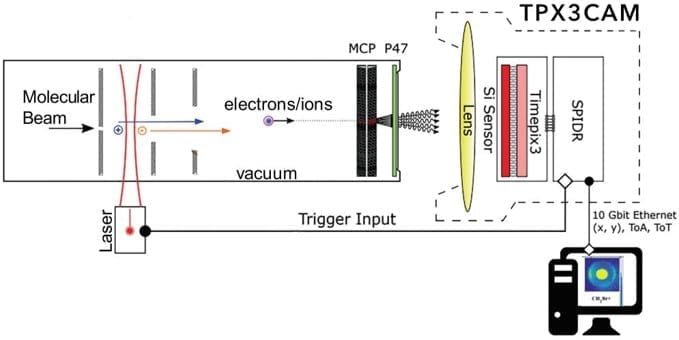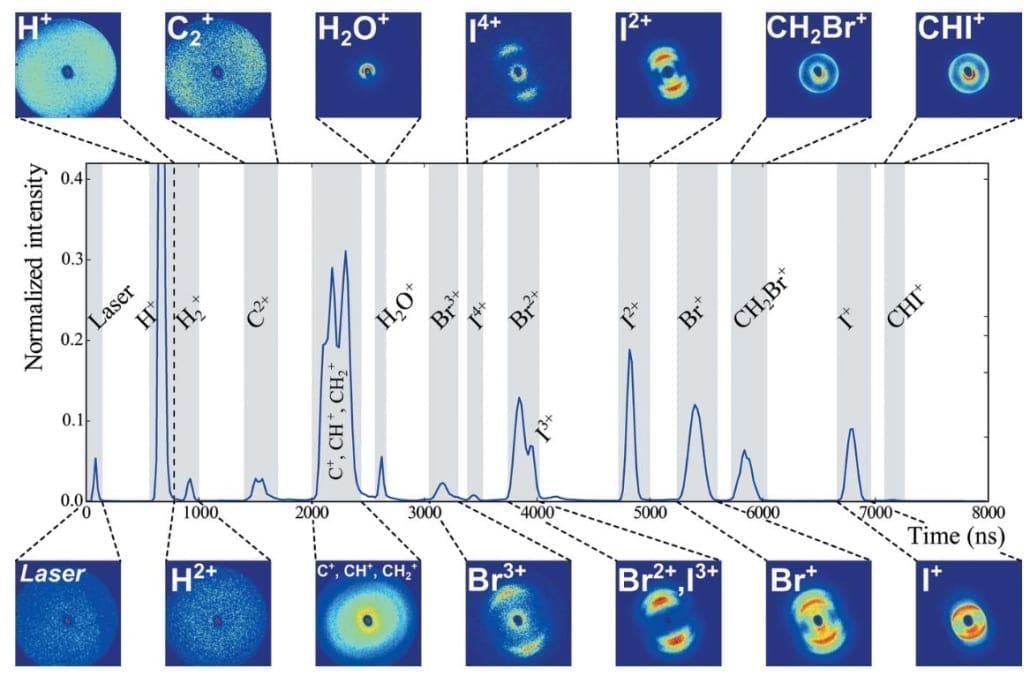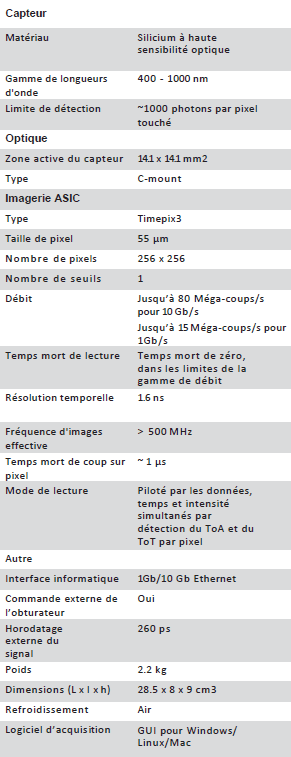A fast optical camera for nanosecond timestamping of photons.
The TPX3CAM camera can be easily integrated into laboratory equipment, synchrotron-type environments or free electron lasers.

TOF ion mass spectrum of CH2IBr recorded with the TimepixCam, with a previous generation of camera on the FLASH beamline of the German Hamburg Synchrotron. Imaging after strong field ionization with an intense laser pulse and camera images for each peak in the TOF spectrum.
Adapted from M.Fisher-Levine et al, J. Synchrotron Rad. (2018) 25, 336-345.

Ion and electronic imaging
Applications of the TPX3CAM camera include spatial imaging and ion velocity mapping in time-of-flight mass spectroscopy, ion and electron coincidence imaging, and other types of resolution imaging spectroscopy
The TPX3CAM is capable of detecting and timestamping ion strikes with a temporal resolution of 1.6 ns, allowing ion pulse images to be recorded simultaneously for all ion species and to avoid having to configure the detector on a single species. This unique sensor design is simple, flexible and capable of highly differential measurements.
Single-photon imaging
The light intensifier version of the TPX3CAM camera can be sensitive to a single photon. In this configuration, the TPX3CAM is used in combination with an integrated light intensifier on the camera.
Applications include wide time range correlated single photon counting (TCSPC) imaging, phosphorescent imaging lifetime measurement (PLIM), and all applications requiring single-photon imaging with temporal resolution.

Image (a) Lifetime images of beads implanted with different Ir compounds and fluorescent plastics acquired with the TimepixCam.
Image (b) Intensity as a function of time (decay of phosphorescence) for the areas A1-A4 indicated in (a), with mono-exponential regressions at the decay of phosphorescence and with the residuals of the regressions. Adapted from L. M. Hirvonen et al, Rev. Sci. Instrument. 88, 013104 (2017).
Advantages of the TPX3CAM
- Silicon detector with very high optical sensitivity.
- Wavelength range: 400-1000 nm.
- Simultaneous detection for each pixel of time (ToA, Time-of-Arrival) and intensity (ToT, Time-over-Threshold).
- 1.6 ns temporal resolution, effective frame rate > 500 MHz.
- Noise-free, data-driven reading at up to 80 Mega-shots/second over 10Gb/s Ethernet.
- Flexible design of optics outside of vacuum.

Brochure TPX3CAM (58 downloads )
Scientific Articles :
Characterization of planar phosphorescence based oxygen sensors on a TCSPC PLIM macro imager (1 download )
Counting of Hong Ou Mandel Bunched Optical Photons Using a Fast Pixel Camera (3 downloads )
Fast camera spatial characterization of photonic polarization entanglement (3 downloads )
Multidimensional quantum enhanced target detection via spectrotemporal-correlation measurements (1 download )
Atomically precise single-crystal structures of electrically conducting 2D metal–organic frameworks (0 downloads )
